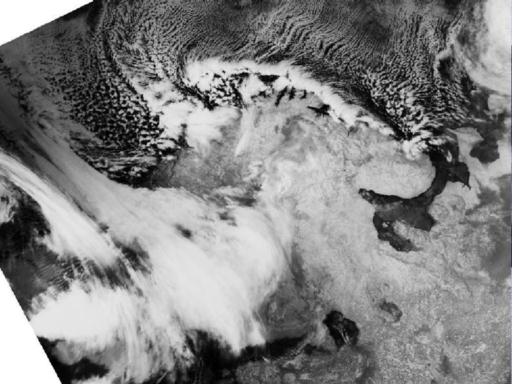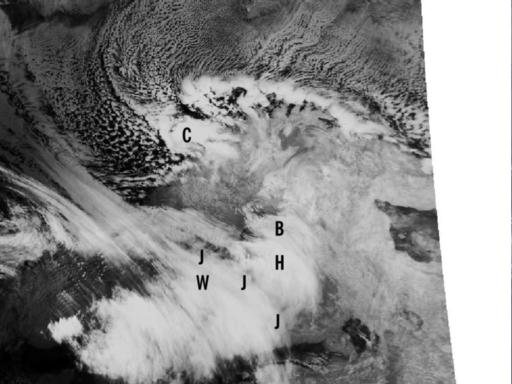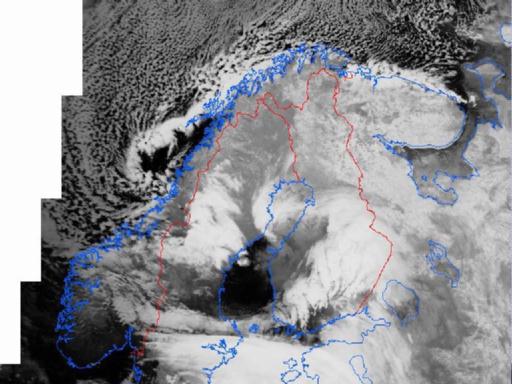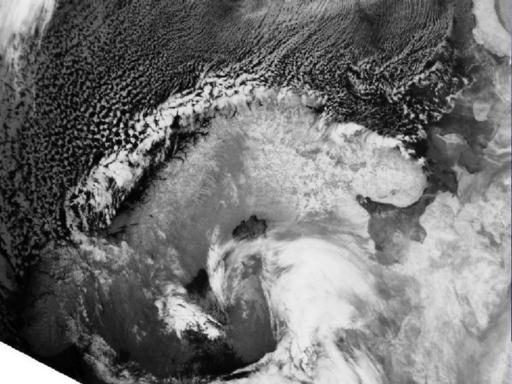29 - 30 JANUARY 1998 - RAPID DEVELOPMENT - SATELLITE OVERVIEW
by FMI
|
29 January 1998/14.36 UTC - NOAA CH4 image
|
29 January 1998/16.16 UTC - NOAA CH4 image; B: cloud bulge, C: Comma, H: cloud head, J: Jet Fibre Cloudiness, W: Wave
|

|

|

|

|
|
30 January 1998/01.29 UTC - NOAA CH5 image
|
30 January 1998/06.02 UTC - NOAA CH4 image
|
Unfortunately there is a several hours gap in NOAA passes during the evening and night. However, the first image for 30 January at 01.29 UTC (left image bottom) indicates that during the evening and night the system has developed considerably from a Wave into a cyclone with spiral cloudiness rotating around the vortex (centred in west Finland). The former head of the cloud is most probably seen almost as a separate hammer-like feature around 65N/22E.
The continuing development can be seen in the 06.02 UTC image (right image bottom) for the same day. This image indicates that the cloud vortex is very intensive. The cloud mass with the brightest tops has moved further south-east. The former head of the cloud is now moving southwards in a strong northerly air stream.


